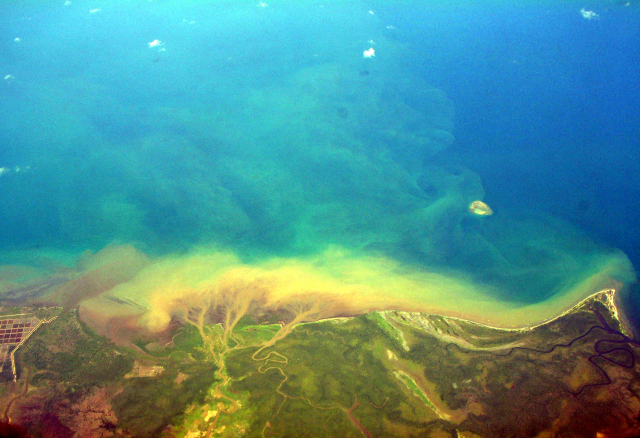Land-Ocean Fluxes and Transformation
Short title: Coastal Transformation
Thematic focus
Coasts are zones where socio-economic and institutional-political transformation and environmental change processes interact, and where the aggregate social, political, and infrastructural effects of human interventions are particularly strong. The land-ocean material and energy fluxes generated by coastal and “hinterland” development create challenges in coastal oceans. Understanding, measuring and managing those changes is pivotal for the future quality of the environment and life in coastal areas in relation to infrastructures, the challenges of urbanisation and migration and other factors.
PA 3 contributes to the protection and sustainable use of tropical coastal ecosystems through analysing land-ocean material fluxes, their management and their consequences. Energy and matter content of river and subsurface water flow transfer the effects of human interventions like land use and land cover change, regulations of hydrology, industrialisation and migration in whole catchment areas towards the coastal zone, where it is modified in estuaries and strongly affects environmental, ecological and socioeconomic conditions. Coastal development itself also contributes to these effects.
The magnitude of the effects of human activities is particularly high in the coastal zone and highlights its extreme vulnerability. In particular, ecosystem services like filter and storage functions for carbon, nutrients, pollutants and sediments of coastal ecosystems can be altered, while institutional structures and practices for mitigation, adaptation and sustainable coastal management require empirically based analysis and development. The role of coastal ‘Blue Carbon’ in climate strategies becomes more and more relevant, and more research is needed to address complexities in accumulating carbon. PA 3 therefore aims to measure those changes and to address causes and consequences of human interventions in the coastal zone and its hinterland on matter fluxes, eutrophication, pollution, habitat and ecosystem distribution, diversity and wellbeing of organisms and people, ecosystem services, socioeconomic conditions and governance and to support the development of mitigation strategies at the local to regional scale.





